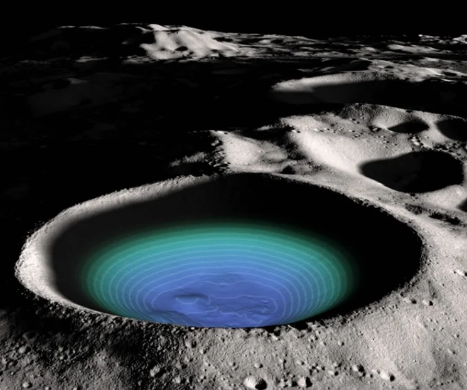Context:
A recent study by Indian space scientists has found evidence for enhanced possibility of Water Ice Occurrence in the polar craters of the Moon.
Key Findings:
• The study is carried out by the scientists of ISRO’s Space Applications Centre (SAC), in collaboration with researchers at IIT Kanpur, University of Southern California, Jet Propulsion Laboratory, and IIT (ISM) Dhanbad.
• It suggests that the amount of subsurface ice in the first couple of meters is about 5 to 8 times larger than the one at the surface in both poles.
• The northern polar region likely holds twice the amount of water ice compared to the southern region.
• The study supports the hypothesis that volcanic outgassing during the Imbrian period is the primary source of this subsurface ice in the lunar poles.
• The distribution of water ice is potentially influenced by past volcanic activity (Mare volcanism) and impact cratering patterns.

Significance:
- Resource Availability: Water ice on the Moon presents a valuable resource for future missions. Extracting and utilizing this ice could provide water for drinking, life support systems, and potentially propellant production.
- Landing Site Selection: Accurate data on ice distribution and depth is crucial for selecting optimal landing sites for future missions focused on exploring and extracting lunar volatiles.
- Human Presence: The presence of readily available water ice strengthens the feasibility of establishing a long-term human presence on the Moon.
Methodology:
- The research team employed seven instruments onboard the Lunar Reconnaissance Orbiter to analyze the Moon’s polar regions.
- These instruments included radar, lasers, optical sensors, neutron spectrometers, ultraviolet spectrometers, and thermal radiometers.
Validation & Future Implications:
- This study corroborates previous ISRO research using Chandrayaan-2 data that suggested the possibility of water ice in polar craters.
- The comprehensive findings support ISRO’s plans for future lunar missions focused on in-situ exploration and utilization of lunar volatiles.

